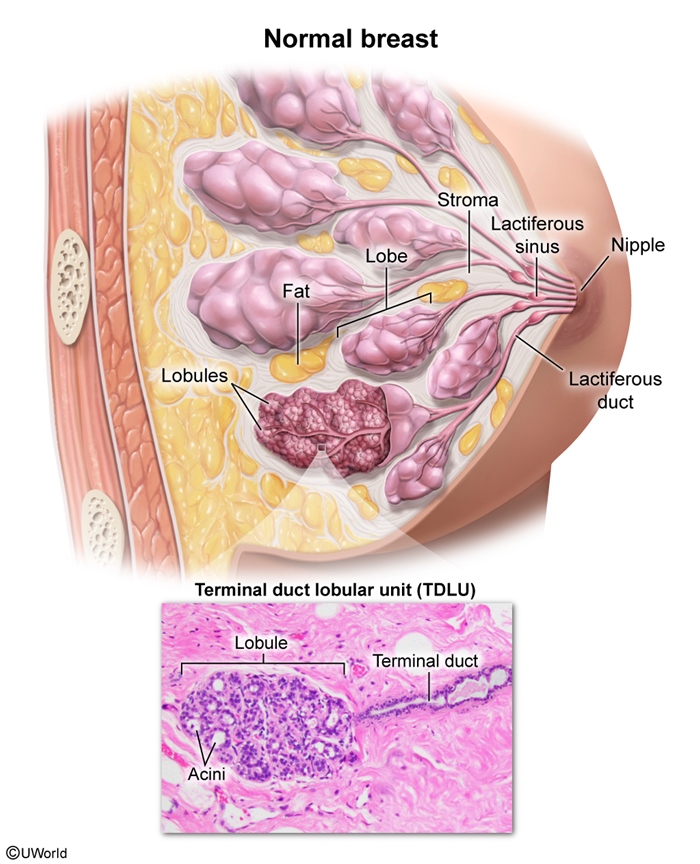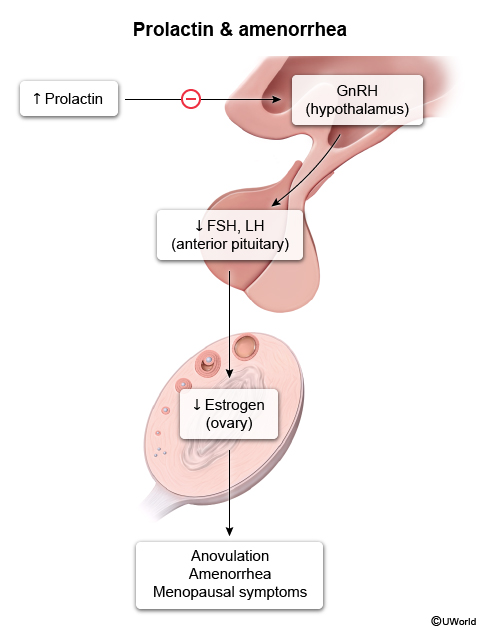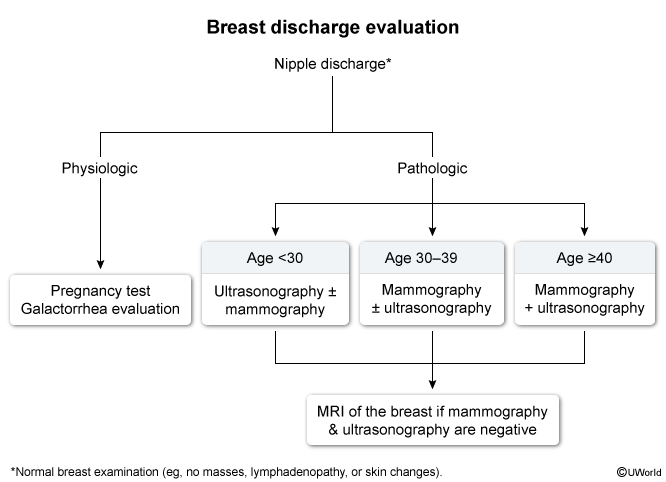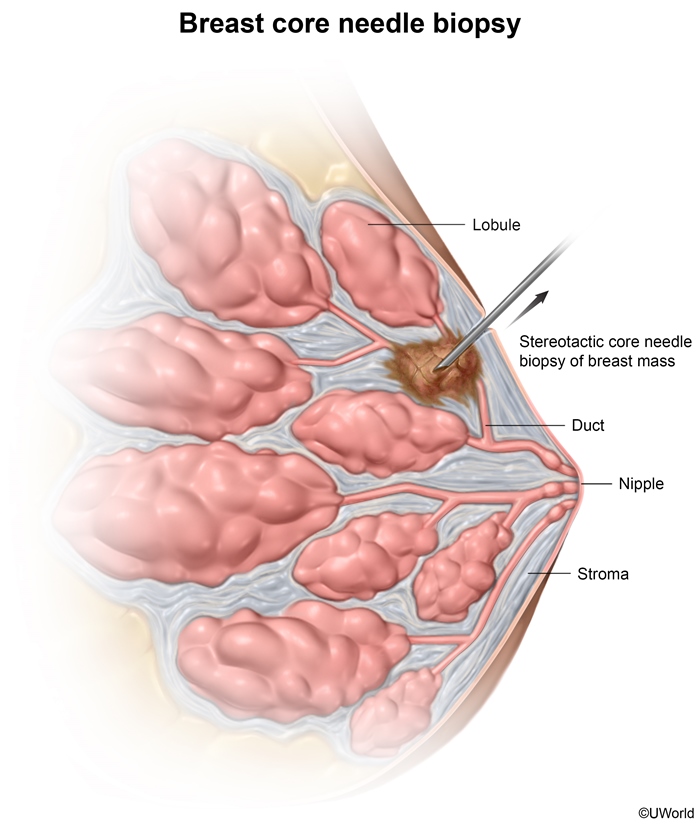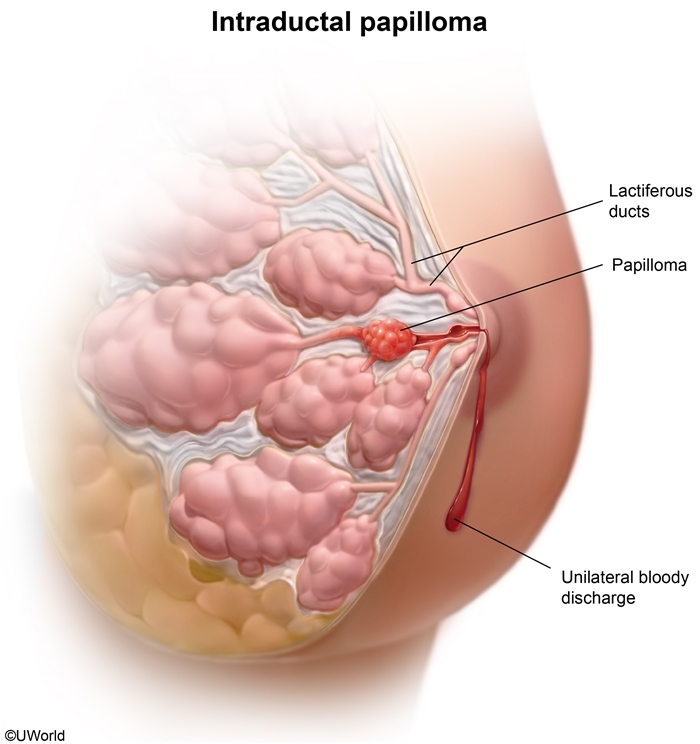Evaluation Of Nipple Discharge
Article Sections
Introduction
Nipple discharge is a common clinical presentation and can be physiologic (eg, galactorrhea) or pathologic (ie, due to an abnormal process within the breast). Although most cases are benign, a thorough evaluation is required to establish the etiology and rule out malignancy.
Pathogenesis
The breast is composed of glandular tissue (lobules and ducts) surrounded by adipose and connective tissue (Figure 1). Breast milk is made in the lobules and then drained by mammary ducts, which converge into the lactiferous sinuses beneath the nipple. The lobules and ducts are lined with epithelial cells that respond to hormonal and local stimuli. Nonlactation discharge from the nipple also arises from this glandular tissue and may involve single or multiple ducts. Nipple discharge that is not related to lactation is broadly categorized as physiologic (ie, benign) or pathologic (ie, concerning for malignancy).
Continue Learning with UWorld
Get the full Evaluation Of Nipple Discharge article plus rich visuals, real-world cases, and in-depth insights from medical experts, all available through the UWorld Medical Library.
Figures
